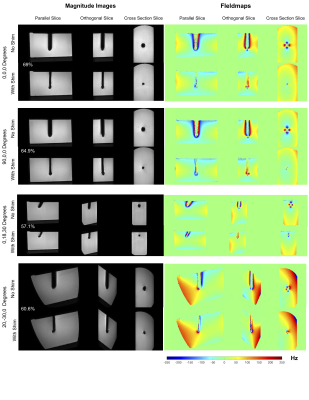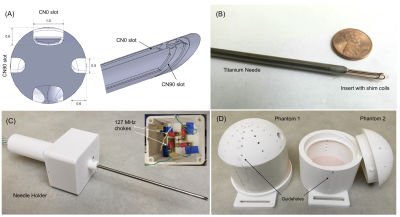Saikat Sengupta1, Xinqiang Yan1, Tamarya Hoyt2, Anthony Gunderman3, and Yue Chen3
1Department of Radiology, Vanderbilt University Institute of Imaging Science, Nashville, TN, United States, 2Department of Radiology, Vanderbilt University Medical Center, Nashville, TN, United States, 3Department of Mechanical Engineering, University of Arkansas, Fayetteville, AR, United States
1Department of Radiology, Vanderbilt University Institute of Imaging Science, Nashville, TN, United States, 2Department of Radiology, Vanderbilt University Medical Center, Nashville, TN, United States, 3Department of Mechanical Engineering, University of Arkansas, Fayetteville, AR, United States
Signal voids caused by metallic probes are a challenge in many interventional MRI applications. Here, we demonstrate effective recovery of metallic probe induced signal loss using a novel, actively shimmed metallic probe at 3 Tesla.

Figure 4
Results of active shimming, 1 x 1 x 1 mm3 3D GRE images and fieldmaps. Excellent recovery of lost signal is achieved in all orientations using pre-estimated shim currents. The width of the signal void approaches the needle width in all cases. Fieldmaps show correction of the underlying ΔB0. Note that the regions closest to the rod with field information in the ‘With Shim’ case have no corresponding field information in the ‘No Shim’ case due to signal loss. The percentage of signal recovered (not accounting for the needle itself) is indicated for all orientations.

